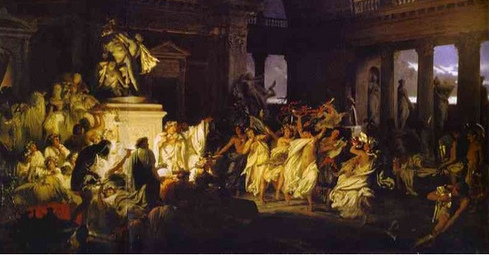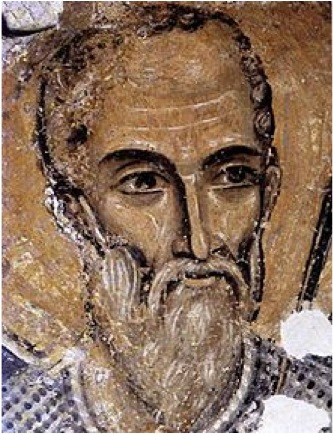
'Tis the Season to be Naughty

Tired of the same old holiday traditions? Try saying “Happy Saturnalia” and then celebrate with an orgy. The 12-day Roman feast devoted to Saturnus (god of the harvest) that started on December 17th was indeed an orgy of gift-giving, over-eating, and raucous baby-making. It peaked around December 25th with Dies solis invicti nati, the day of the Birth of the Unconquered Sun.

More Party Revelers al Fresco
Perhaps the holidays would take on a whole new meaning if you knew that many of our enduring end-of-the-year traditions have emerged from ancient rites having to do with sex. These days, when we celebrate the holidays, we’re largely engaging in a variety of pagan practices cleaned up by the early Christian Church.

Roman Orgy in the Time of Caesars by Henryk Siemiradzki. 1872
Kissing under the mistletoe seems innocent enough until you know a bit more. In accounts written by Pliny, the Roman historian, the Celts in northern Europe held week-long rituals at the time of the winter solstice in a effort to convince the sun to be re-born. The feasted, drank mead laced with the sacred plant, mistletoe, and then engaged in wild sex orgies. The kissing ritual that’s left over these days is apparently just a watered down version of Celtic foreplay.

Then there’s the simple act of decorating with holly. For the Druids (Celtic priests), holly represented the most sacred of trees and was dedicated to Mother Holle or Hel, goddess of the underworld. The red berries of the holly were thought to be symbolic of her menstrual blood. The white berries of mistletoe were considered to be drops of semen belonging to the revered oak god.

Medieval fresco depicting St Nicholas
Nevertheless, the image of a wild man dressed in furs — a kind of beast-god — who takes to the sky with horned creatures and delivers the gods to the world in one magical night — has antecedents reaching back thousands of years. He is a figure symbolic of the cyclical nature of the world, of death and re-birth.

Pan — Precursor to Santa?
He is a figure who has shaped the core mythologies of many cultures as the personification of the unknown and the uncontrollable — from the horny Pan in Greek mythology to the destructive horned god, Satan.

Krampus
One kinky version to the Santa/St. Nicholas theme is the demonic figure of Krampus who appears in European Alpine folklore. Sometimes he accompanies St. Nicholas and they operate as a kind of good cop/bad copy duo. St. Nicholas bestows gifts while Krampus beats naughty children with switches and puts them in a bag and carries them off (presumably to be eaten). He is thought to be especially fond of spanking young girls with birch rods.

Krampus
So the next time you find yourself on Santa’s knee, bear in mind that this hairy, fat guy in a red suit may have some very pagan thoughts of his own.

Santa in Coca Cola ad
As for the color of his outfit, you might remind him that bright red and white match the colors of fly agaric mushrooms, a favorite food of reindeer and a power hallucinogen from northern Europe used in pre-Christian shamanic rituals.

Amanita muscaria, commonly known as the fly agaric
Now go party — and skip the fly-agaric!
